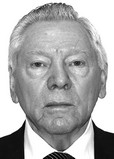Effects of hypoventilation breathing on physical working capacity and functional status of skilled athletes during submaximal exercise
Фотографии:
ˑ:
Dr.Biol., member-correspondent RAS, Professor N.A. Fudin1
PhD S.Ya. Klassina1
PhD S.N. Pigareva1
Dr,Med., Professor Yu.E. Vagin2
1P.K. Anokhin Research Institute of Normal Physiology, Moscow
2I.M. Sechenov First Moscow State Medical University, Moscow
Objective of the study was to analyze the effects of voluntary hypoventilation breathing on physical working capacity and functional status of qualified athletes during submaximal exercise. The study involved 25 young males with different physical fitness levels. All of them were examined twice, and in both cases they were asked to perform a submaximal step load test on a cycle ergometer. Moreover, the first testing was carried out before the hypoventilation breathing training, the second one - after it. The subjects’ condition was evaluated at rest and during the stress test. We registered the ECG and pneumogram, heart rate and respiration rate, time of submaximal exercise and its "physiological penalty", external respiration rates and level of blood oxygen saturation. Before and after the testing, blood pressure and timed inspiratory capacity were measured. The hemodynamic parameters were estimated by means of a calculation. It was shown that hypoventilation training develops increased hypoxic tolerance and physical working capacity in athletes against the background of "economization" of their respiratory function and stability of blood oxygenation.
Keywords: sports, submaximal exercise, hypoventilation breathing, hypoxic tolerance, physical working capacity, physiological penalty.
References
- Breslav I.S. Proizvolnoe upravlenie dykhaniem u cheloveka [Arbitrary control of respiration in man]. Lenigrad: Nauka publ, 1975. 152 p.
- Breslav I.S., Glebovskiy V.D. Regulyatsiya dykhaniya [Respiration control]. M.: Nauka publ, 1981. 280 p.
- Karpman V.L., Lyubina B.G. Dinamika krovoobrashcheniya u sportsmenov [Circulatory dynamics in athletes]. Moscow: Fizkultura i sport publ., 1982, 135 p.
- Ryzhikov G.V., Klassina S.Ya. Prostranstvenno-vremennaya struktura «kvanta» proizvodstvennoy deyatelnosti kontrolera i ego fiziologicheskoe obespechenie [Space-time structure of "quantum" of controller's professional activity and its physiological support]. Fiziologiya cheloveka [Human physiology], 1984, vol. 10, no. 1, pp. 144-152.
- Fudin N.A. Fiziologicheskaya tselesoobraznost proizvolnoy regulyatsii dykhaniya u sportsmenov [Physiological feasibility of voluntary regulation of breathing in athletes]. Teoriya i praktika fiz. kultury, 1983, no. 2, pp. 21-22.
- Fudin N.A., Sudakov K.V. [ed.] Gazovy gomeostazis (proizvolnoe formirovanie novogo stereotipa dykhaniya) [Gas homeostasis (voluntary formation of new breathing stereotype)]. Tula: Tula publ., 2004, 216 p.
- Fudin N.A., Klassina S.Y., Vagin Y.E. Gipoventilyatsionnoe dykhanie kak sredstvo povysheniya fizicheskoy rabotosposobnosti cheloveka pri fizicheskoy rabote do otkaza [Effects of hypoventilation breathing on physical working capacity during exercise to failure]. Teoriya i praktika fiz. kultury, 2016, no. 12, pp. 55-57.
- Fudin N.A., Klassina S.Y., Pigareva S.N., Vagin Y.E. Pokazateli myshechnoy i serdechnososudistoy sistem u lits, zanimayushchikhsya fizicheskoy kulturoy i sportom, v moment otkaza ot intensivnoy fizicheskoy nagruzki [Muscle and cardiovascular indicators in persons engaged in physical culture and sport during muscular failure]. Teoriya i praktika fiz. kultury. 2015. no. 11. pp. 18-20.



 Журнал "THEORY AND PRACTICE
Журнал "THEORY AND PRACTICE